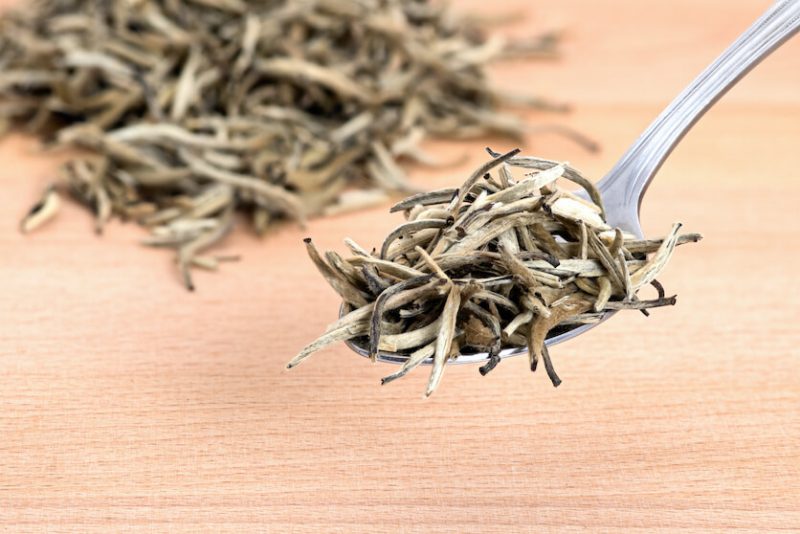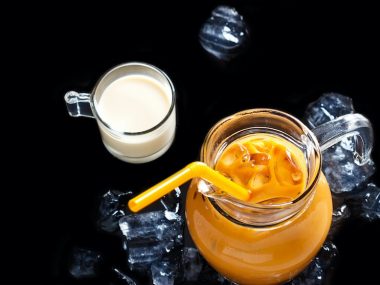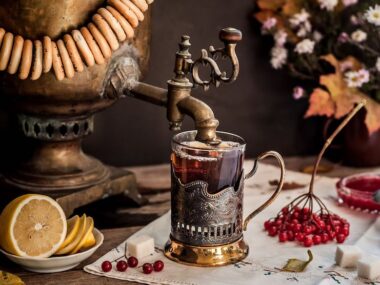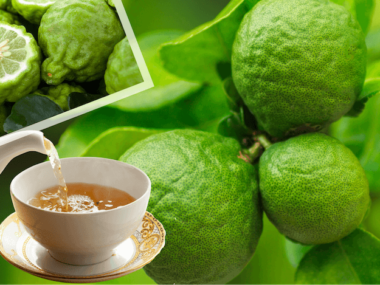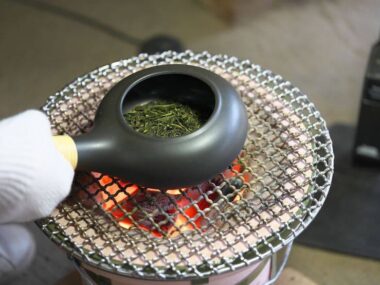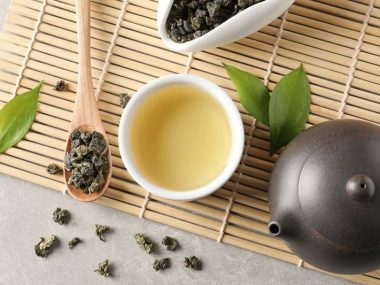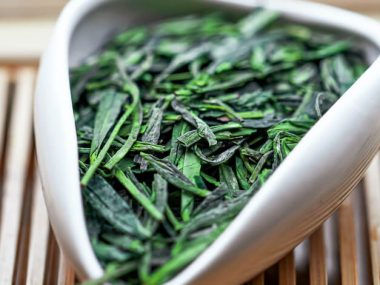You have been missing an absolute gem if you haven’t had white tea yet. The brilliance of the sun and the nourishment of the earth is harnessed into one of life’s greatest pleasures served up in a teacup.
Table of Contents
What Is White Tea?
White tea is a type of true tea that is made from Camellia sinensis (tea plant). The other true teas in addition to white include black, green, oolong, and yellow. What sets these teas apart from one another is the terroir (climate, soil, altitude), flushes (time of harvest), and processing.
White tea is often mistaken as a weak/diluted tea because of how its color and body pales in comparison to black or green tea. Those who have not tried white tea may have the perception of it being tasteless. Looks are so deceiving when it comes to the diamond of all tea types.
Every tea drinker has their personal preference in taste and body in a tea. Many of these tea drinkers are very partial to white tea. Among the different types of true teas (black, green, oolong, yellow, white,) white tea is the most desirable, the sweetest, and expensive. It gives pu-erh tea (which is the most expensive tea) a run for its money!
What Does White Tea Taste Like?
The perfect description of white tea is its purity and brightness. You can almost taste the kiss of clouds that engulf the tea leaves on top of mountains that jut upwards towards the sky. The delicate flavor quietly bounces around with hints of sweet floral and fruity nuances.
Varieties Of White Tea
Tea makers harness the embrace that white tea offers with infusions of fruit, herbs, essential oils, and the occasional blends of another true tea. There are numerous varieties of white tea with infusions of fruit, essential oils, or herbs, and even a few that have a harmonious blend with another tea.
White Peach
This tea is a favorite, especially as a cold-brew tea for summertime. Infusions of bits of peaches and peach essential oil balance well with the delicate melon flavor already present in white tea.
Pomegranate White Tea
This tea features an infusion of pomegranate flavoring or pomegranate bits. Some tea makers also infuse bits of raspberry, cornflowers, or other fruits/herbs.
White Pear
White pear tea is a delicate tea with infused bits of peaches that add a subtle peach flavor that unfurls in brewing. As a cold-brew tea, it makes a beautiful summer iced tea.
Darjeeling White
Grown in the Darjeeling region of India, this white tea is made from the fuzzy white tips of the tea plant. It’s a delicate tea with a muscatel veil that bathes the palate with a finish of sweet, floral, citrusy notes.
Royal Wedding
This regal white tea consists of white tea buds that are married with perfectly selected infusions of rose petals, almonds, cornflowers, marigolds, vanilla, and coconut. Each of these infusions and the sweetness of the tea buds deliver a gala of fruity, nutty, and floral that dances on the palate.
Jasmine
Jasmine-infused white tea is perhaps one of the most coveted aromatic teas. Each sip opens the senses with the fragrant aroma as a very subtle citrusy sweetness meets a palate midway and ending with a finale of floral.
Ceylon White
The buds of white tea plants grown in Ceylon (Sri Lanka) are harvested to produce this crisp tea. Various flavors of citrus, fruits, spice, and florals join hands to deliver a tea with layered flavors of orange, apple, and cloves which give way to a beautiful floral ending.
Malawi Antlers
This rare white tea is made from the velvety stems and buds of the tea plant grown in Malawi, Africa. Small batches are made, which limit the amount of tea made available to the tea industry. If you manage to secure this tea, it won’t disappoint. Every sip of this tea delivers a consistent union of sweet peach and apricot.
White Peony (Bai Mu Dan)
This white tea quietly slips into place, rated as the second-best white. The top two leaves and bud are harvested, which lends to the bright sweetness and a vegetal nuance that is subtly detected.
Silver Needle
Silver needle is considered the creme de la creme of white teas. One is met with a tea that exceeds expectations because it bathes the palate with a luxurious smooth sweetness with hidden notes of orchids.
Caffeine In White Tea
So, does white tea have caffeine? It does. A six-ounce cup of tea can yield up to 70 mg of caffeine. Caffeine levels increase the longer a tea is steeped. Cold-brew teas deliver less caffeine compared to their hot counterparts.
When Should I Drink White Tea?
Just as any other true tea (black, green, oolong, yellow,) white tea’s caffeine can affect getting to sleep if consumed in the evening. A good rule of thumb is to cut off caffeine consumption in the late afternoon. It’s best to reserve decaf tea or tisanes for an evening tea.
Can You Drink White Tea Every Day?
As with any tea or tisane, it’s best to consult with your healthcare provider before consuming it. This is especially true if you have medical conditions, are taking medications, or have a sensitivity to caffeine. We don’t have the medical expertise to recommend or advise whether or not drinking white tea is a good fit for you. Things such as caffeine or tea constituents may cause adverse reactions, side effects, drug interactions, or worsen existing medical conditions.
White Tea vs. Green Tea: Is White Tea Healthier Than Green Tea?
White tea may appear to be a weaker version of its green counterpart. However, don’t let the color fool you into assuming this. White tea is not inferior to green tea but is just the opposite.
The quality, taste, and benefits of true teas vary. White tea is on the left end of the spectrum, with black being on the far right end. In the middle are oolong and yellow.
The spectrum might look like this. A tea’s purity is based on the amount of processing it goes through. The purer a tea is, the more true to form it will be in taste. Pure teas also have the highest benefits, which are preserved through less processing.
| Left | Middle | Right | ||||
Green tea | Oolong tea | |||||
White tea | Yellow tea | Black tea | ||||
Purest | Purer | Pure | Less pure | Less pure | ||
Highest benefits | Higher benefits | High benefits | Good benefits | Lower in benefits | ||
Processing | Processing | Processing | Processing | Processing | ||
Little to none | Very little | Some | More | Most | ||
Color | Color | Color | Color | Color | ||
| Most pale | Lighter | Light | Slightly darker | Darkest | ||
| Flavor | Flavor | Flavor | Flavor | Flavor | ||
| Delicate, sweet, fruity, floral | Earthy, vegetal, sweet, fruity | Earthy, vegetal, sweet | Earthy, vegetal, mineral, sweet, fruity | Robust, bold |
As you can see, white tea is the purest and delivers the most benefits compared to green tea. When it comes to flavor, white tea has a much more palatable taste that’s sweet and subtle, whereas green tea is earthy and vegetal. Which would you choose?
White Tea Benefits
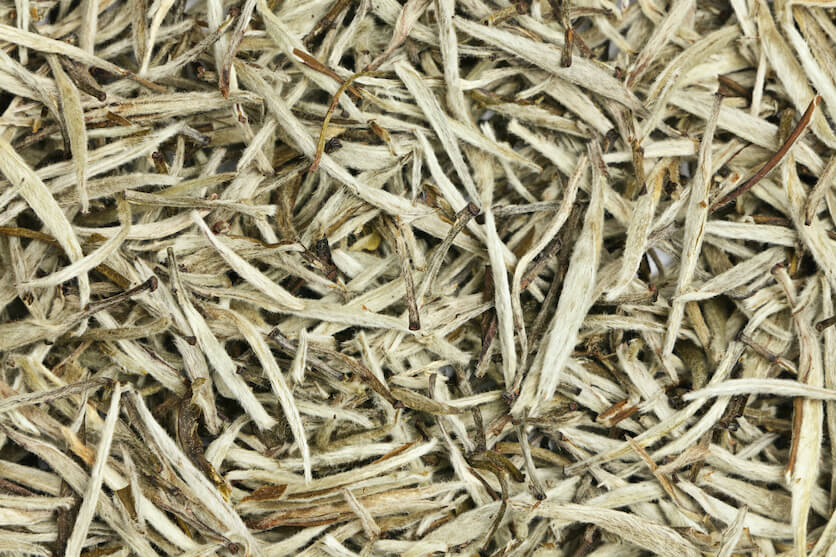
The Journal of Food Science, Nutrition and Dietetics published an article that mentions white tea as being very beneficial. White tea is the least processed tea, and it’s because of the absence of extensive processing, the constituents in the tea leaves remain at their highest level. One such constituent is phenols.
Of all the true teas (black, green, oolong, yellow,) white tea contains the highest level of phenols. Phenols are responsible for acting as an antioxidant, antidiabetic, and anti-inflammatory. The bioactivity of phenols goes on to act as an antidepressant, antihypertensive, and antibacterial.
Why White Tea Is Expensive
White tea is considered rare because of the limitations placed on it. Only certain parts of the tea plant are harvested (buds, first two leaves, tips, etc.) rather than the tea leaves in their entirety as with other teas.
Tea plants grown at extremely high altitudes on steep inclines make it difficult to plant and harvest, which also limits the amount of white tea produced. Limited flushes (harvests) play a vital role in the amount of white tea produced. Flushes must occur within a specific time period because of the climate.
Although pu-erh (post-fermented tea) is the most expensive tea, white tea gives it a run for its money. A silver needle white tea from Nepal goes for about $15.00 (USD) per ounce. To give you an idea of how expensive white tea is, a cup of black tea (Assam) costs about $9.00 (USD) per ounce.
The “Diamond” Of Teas
White tea, by most, is thought of as the diamond of all teas because of its purity. Just as a diamond comes from the earth in a rough form, it shines as the brightest gem. White tea bursts forth from the soil of mother earth and is refined into a brilliantly shining cup of utter bliss becoming a diamond in a teacup!
